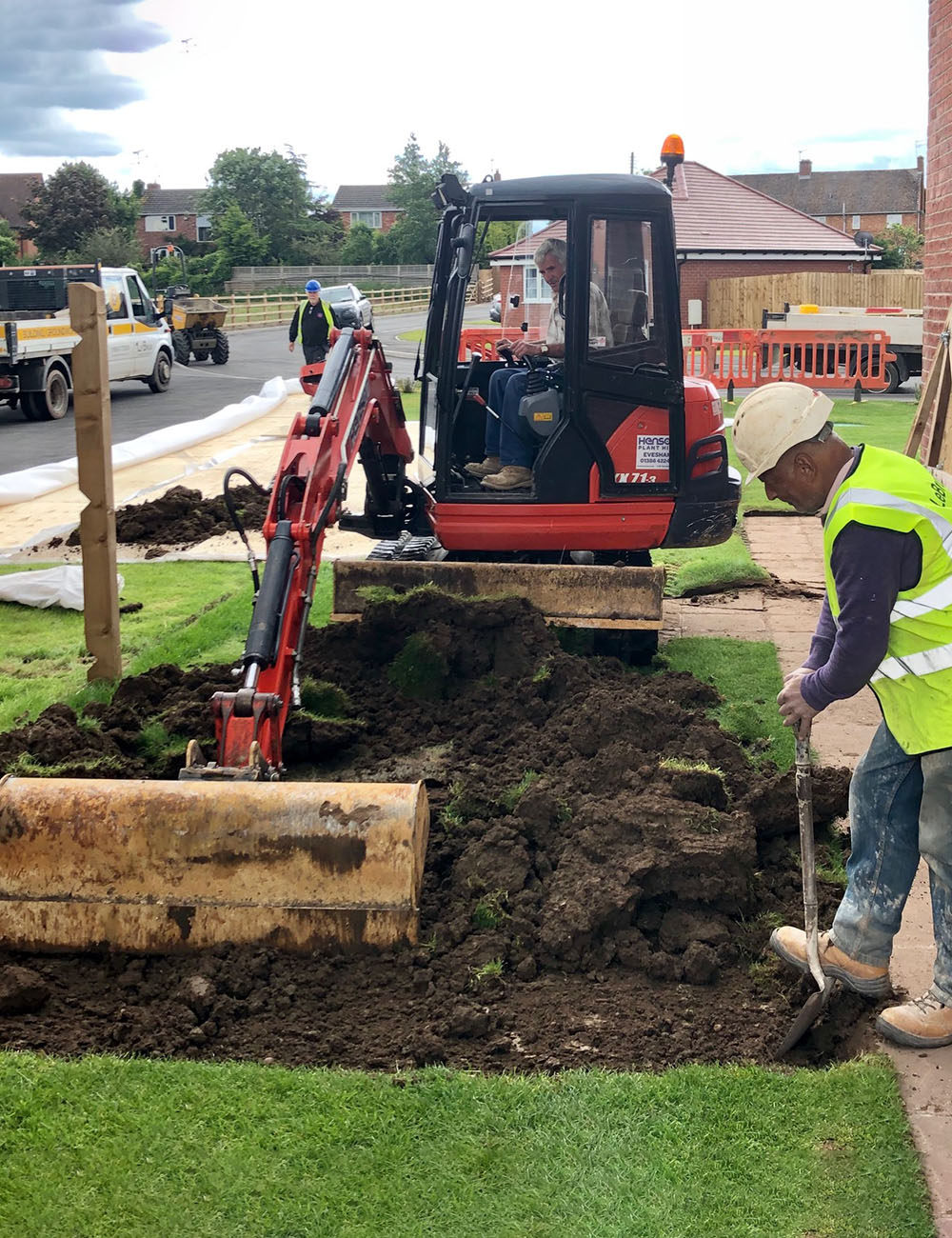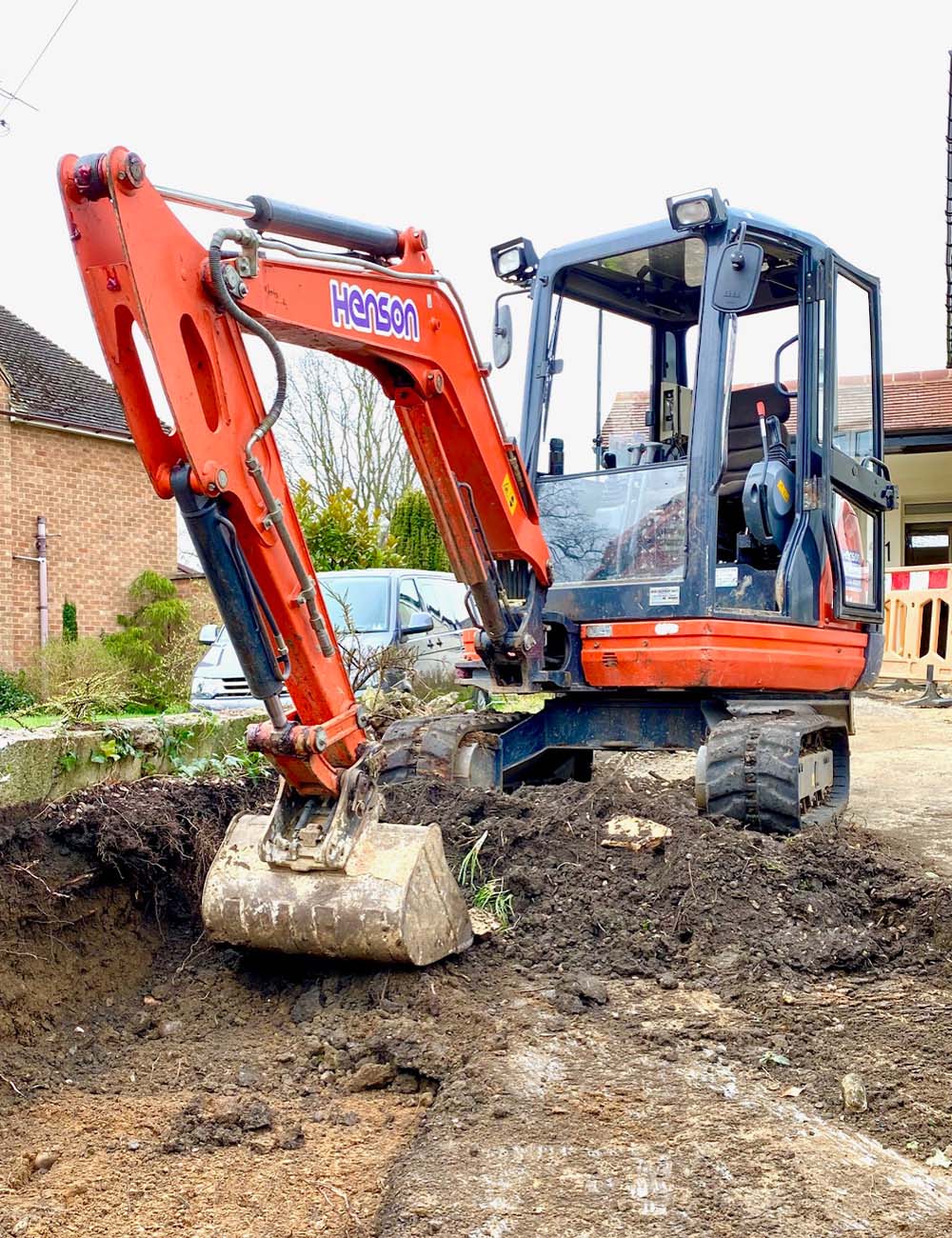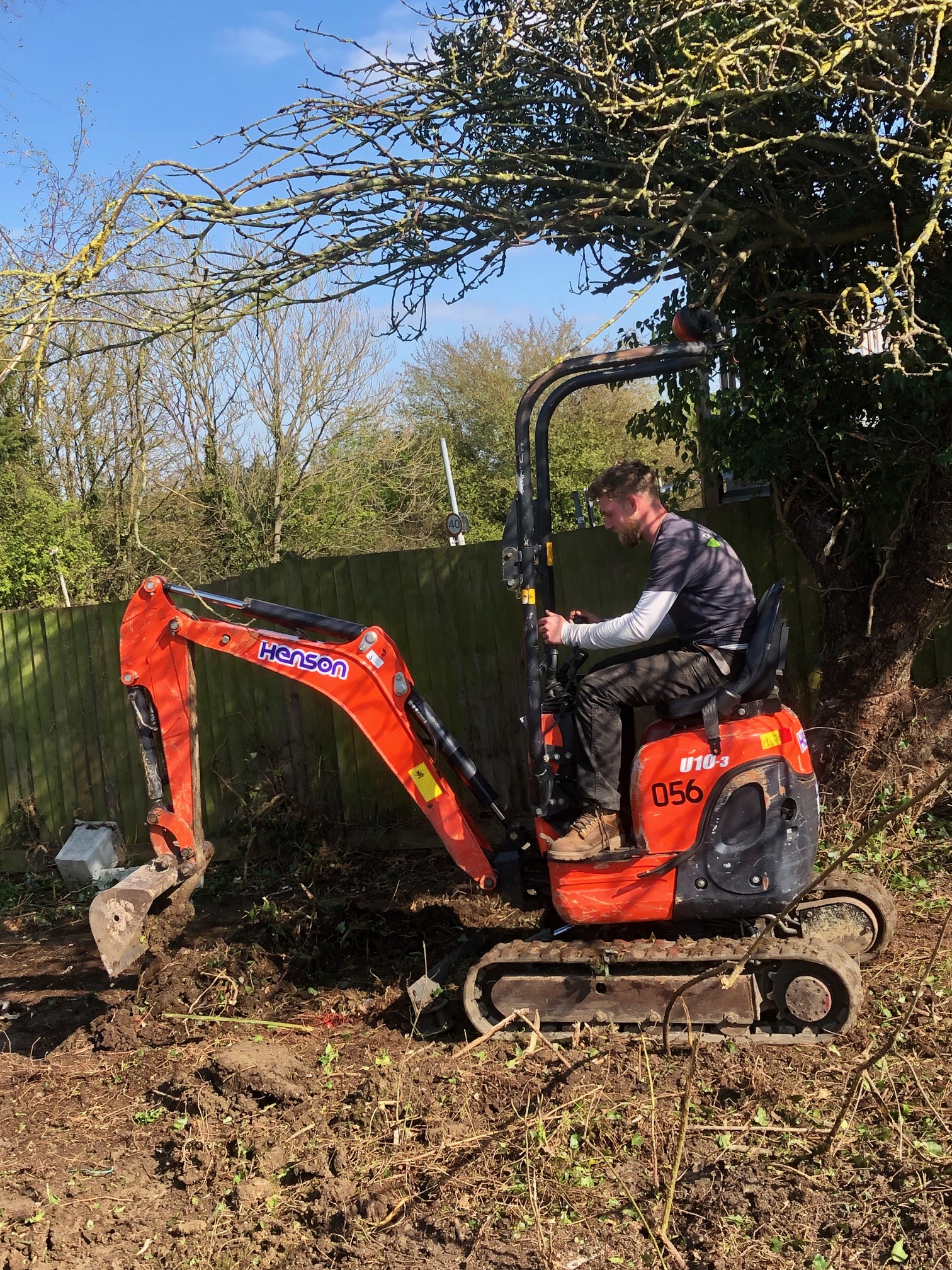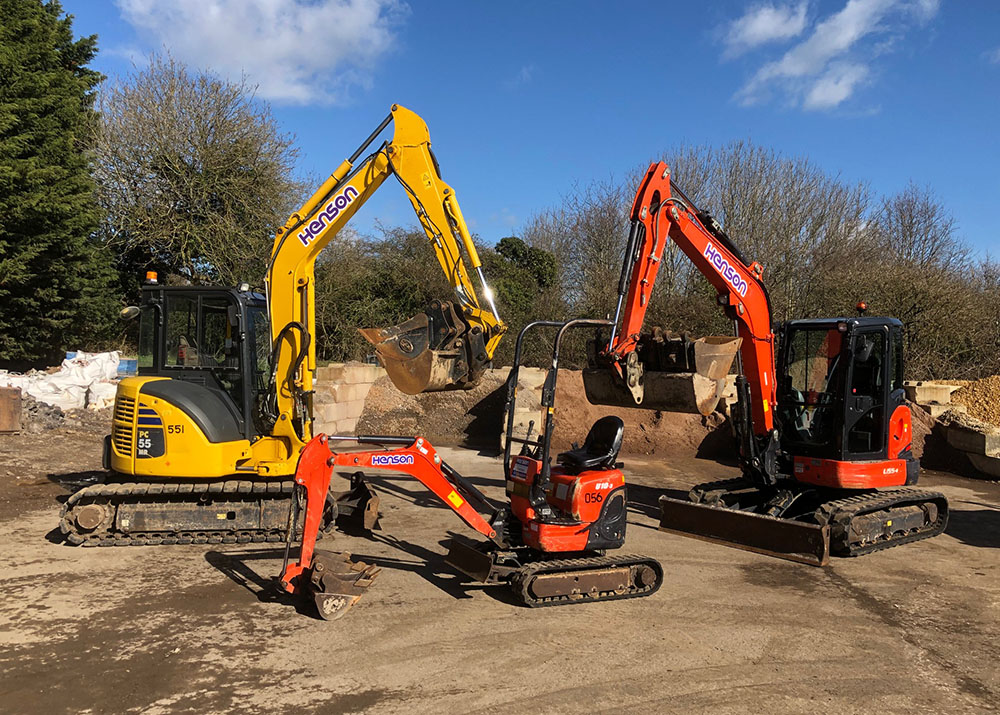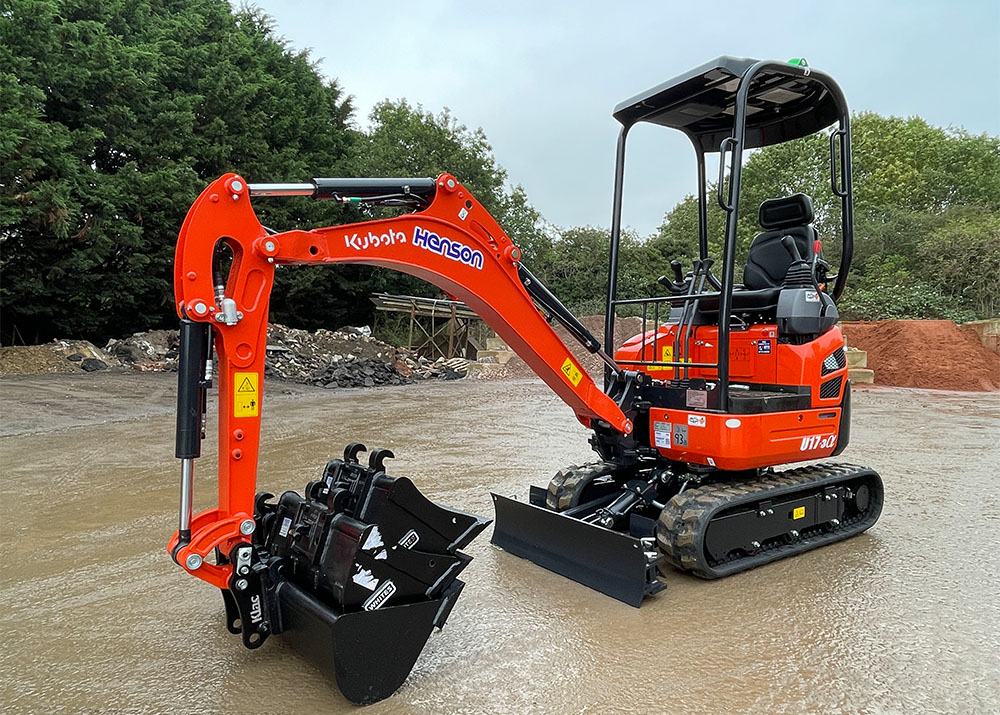
How to operate a mini digger?
Blog
In the world of construction and plant hire, the mini digger stands out as a powerhouse in a compact package. With its agility and versatility, mastering the operation of a mini digger opens up a realm of possibilities for efficiently completing tasks in tight spaces with precision and finesse.
In this article, we will delve into the fundamental principles and practical tips that will empower you to navigate and operate a mini digger like a seasoned pro. Get ready to uncover the secrets to unlock this mighty machine's full potential!
The Importance of Understanding How to Operate a Mini Digger
Proficiency in operating a mini digger is crucial for various reasons, especially in construction and landscaping industries where these compact excavators are commonly used. Here's why understanding how to operate a mini digger is essential:
- Safety: Operating heavy machinery like mini diggers comes with inherent risks. Proper training and knowledge of operating procedures can significantly reduce the likelihood of accidents, ensuring a safe working environment for yourself and those around you.
- Efficiency: Skilled mini digger operation leads to increased job site efficiency. Knowing how to manoeuvre the machine effectively, use attachments properly, and complete tasks accurately can streamline work processes and boost productivity.
- Cost-Effectiveness: Competence in operating a mini digger can help minimise unnecessary damage to equipment and property. By avoiding mistakes and working efficiently, you can save on repair costs and prevent project delays.
- Versatility: Understanding how to operate a mini digger opens up many job opportunities in the construction, landscaping, and agriculture sectors. Proficiency in using this versatile equipment allows you to take on diverse projects that require excavation, trenching, lifting, and other tasks.
- Compliance: In many regions, operating heavy machinery like mini diggers requires certification or licensing. Acquiring the necessary training and certifications ensures compliance with legal requirements and industry standards.
- Problem-Solving: Operating a mini digger involves assessing site conditions, planning excavation tasks, and adapting to unforeseen challenges. Proficiency in using the equipment enhances your problem-solving skills and ability to overcome obstacles effectively.
Investing time and effort in learning the ins and outs of mini digger operations can significantly impact one's success in industries that rely on heavy machinery for various tasks.
So, how do you operate mini diggers?
Operating a mini digger requires skill, caution, and adherence to safety protocols. Here are some general steps to guide you through the process:
Familiarise Yourself with the Controls:
Before starting the mini digger, familiarise yourself with the controls, including joysticks, pedals, levers, and buttons. Understand the function of each control and how it affects the machine's movement.
Perform Pre-Operation Checks:
Inspect the mini digger for any visible damage, leaks, or malfunctions. Check fluid levels, such as fuel, hydraulic oil, and coolant, to ensure the machine is in good working condition.
Start the Engine:
Start the mini digger according to the manufacturer's instructions. Allow the engine to warm up before operating the machine to ensure optimal performance.
Practise Basic Movements:
Practise basic movements such as driving forward and backwards, turning, raising and lowering the boom, and operating the bucket. Get comfortable with the controls and how they respond to your inputs.
Excavation Techniques:
Learn how to operate the mini digger for excavation tasks, including digging, loading, dumping, and levelling. Practice controlling the bucket and boom for precise movements.
Safety Procedures:
Safety should be a priority at all times. When operating the mini digger, use seat belts, wear appropriate personal protective equipment, and follow safety guidelines. Be aware of your surroundings and watch out for obstacles or hazards.
Advanced Techniques:
Once you are comfortable with basic operations, learn more advanced techniques such as trenching, backfilling, grading, and using attachments like augers or grapples. Practise these techniques under supervision to improve your skills.
Shutdown Procedures:
After completing your work, follow proper shutdown procedures to safely turn off the mini digger. Secure the machine, lower the boom, and engage the parking brake.
Proper training and certification may be required to operate mini diggers in certain regions. If you are new to operating heavy machinery, consider taking a training course or seeking guidance from experienced operators to enhance your skills and ensure the safe operation of the equipment.
Importance of Safety
Before using mini excavators, the first thing to note is always to be safe. Safety should always be the top priority with any plant. Let's look at how you can practise plant hire safety and what safety gear and precautions are available.
- Precautions for Safe Operation:
Pre-Operation Inspection: Before starting the mini digger, it's essential to conduct a thorough inspection. Check for any faults, malfunctions, or damage that could compromise the equipment's or the operator's safety.
Adherence to Guidelines: Follow all manufacturer guidelines and safety instructions outlined in the operator's manual. This includes proper operating procedures, safety precautions, and maintenance recommendations to ensure the correct and safe use of the machine.
By incorporating these precautions into daily operations, you can help maintain a safe working environment and minimise the risk of accidents or injuries while operating a mini digger on the construction site.
- Proper Safety Gear
Proper safety gear is crucial when operating mini diggers. Before starting your machine, The primary safety gear should be the three accessories below.
- Hard Hats: Protect the head from falling objects and potential head injuries.
- Gloves: Shield the hands from cuts, burns, and abrasions while providing a better grip.
- Steel-Toed Boots: Safeguard the feet from heavy objects and potential crushing hazards.
Additionally, high-visibility clothing is vital in enhancing visibility, especially in low-light conditions. By making workers more noticeable to others on the site, it reduces the chances of accidents.
- Maintaining a Safe Operating Environment:
To maintain a safe operating environment while using a mini digger, it's essential to take the following precautions:
Clear Operating Area: Before starting the mini digger, ensure the operating area is clear of obstacles, debris, and bystanders. This helps prevent accidents and provides a safe working environment for the operator and those nearby.
Designated Zones and Safety Protocols: Establish designated zones and safety protocols on the construction site. Mark areas where the mini digger will operate and communicate safety guidelines to all personnel involved. This helps create a structured and secure environment for work activities.
By proactively addressing these safety aspects, you can significantly reduce the risk of accidents and promote a safety culture and awareness on the construction site.
Understanding the Controls of a Mini Digger
To operate a mini digger effectively, it's crucial to familiarise yourself with the various controls available on the machine. These controls typically include:
- Joysticks: These are used to control the movement of the mini digger, such as forward, backwards, left, and right motions. They are often used for precise maneuvering of the machine.
- Pedals: Pedals may be present to control the speed and direction of the mini digger. They are commonly used to regulate movement, especially when performing tasks that require careful handling.
- Levers: The mini digger's levers operate attachments like the bucket. They control functions such as digging, lifting, lowering, and dumping materials. Familiarising yourself with the levers is essential for the machine's efficient operation.
Operating a mini digger efficiently requires a deep understanding of its key controls and how each one influences the machine's movement and operation. It's important to remember that all machines are different, and you need to read and understand the manual instructions. However, let's take a look at the basic requirements you may face when controlling a mini digger.
- Throttle Control:
- The throttle control regulates the engine speed of the mini digger.
- Increasing the throttle increases the power output while decreasing it reduces the speed of the machine's operations.
- Boom Control:
- The boom control determines the vertical movement of the arm of the mini digger.
- Extending the boom control raises the arm while retracting it lowers the arm for precise digging and lifting.
- Bucket Control:
- The bucket control manages the movement of the bucket attachment at the end of the arm.
- Tilting the bucket control forwards or backward controls the bucket angle for digging and dumping materials.
- Swing Control:
- The swing control allows the mini digger to rotate either clockwise or counterclockwise.
- Utilising the swing control enables the operator to position the machine accurately for various tasks.
- Track Control:
- The track control regulates the movement of the tracks that propel the mini digger.
- Pushing both tracks forward moves the digger forward while pulling them back reverses the direction.
Understanding how each control influences the movement and operation of the mini digger is crucial for mastering the machine's capabilities. With proficiency in these controls, operators can navigate the mini digger with precision and efficiency, making construction tasks seamless.
A Mini Guide: Starting the Mini Digger Safely
Now that you know the basics, you know how important it is to follow a systematic approach to starting up the machine safely. Let's look at how to operate mini excavators with a small step-by-step guide.
Step 1: Pre-Operation Checks:
Fluid Levels Check:
- Verify the engine oil, hydraulic fluid, and coolant levels to ensure they are within the recommended range for optimal performance.
- Top up fluids below the specified levels to prevent potential issues during operation.
Inspect Attachments:
- Confirm that the bucket or any other attachments are securely fastened to the arm of the mini digger.
- Check for any signs of wear or damage on the attachments that could impact their functionality during operation.
Test Controls:
- Test each control, including the throttle, boom, bucket, swing, and track controls, to ensure they respond smoothly and accurately.
- Address any issues with the controls promptly before starting operational tasks to maintain operational efficiency and safety.
Step 2: Operation:
- Check the Environment: Prior to starting the mini digger, assess the operating area to ensure it is free of obstacles, bystanders, and potential hazards. Clearing the workspace of anything that could impede the machine's movement or pose a safety risk is essential for smooth operations.
- Position the Mini Digger: Position the mini digger on stable ground to prevent instability while operating the machine. Ensuring that the ground is firm and level helps maintain the balance and stability of the mini digger during use, reducing the risk of accidents or equipment damage. Positioning the machine correctly sets the stage for a safe and productive work environment.
- Insert the Key: Begin by inserting the key into the ignition slot of the mini digger. Ensure the key is fully inserted and turned to the correct position for ignition.
- Start the Engine: Turn the key in the ignition to start the mini digger engine. Listen for the sound of the engine starting up smoothly, indicating that the ignition process is successful.
- Follow Manufacturer's Guidelines: It's essential to adhere to the manufacturer's guidelines for starting procedures specific to your mini digger model. Different models may have varying startup sequences or safety measures that must be followed for optimal performance and safety.
- Check Dashboard Gauges: Take a moment to inspect the dashboard gauges on the control panel. Look for crucial indicators such as fuel level, engine temperature, and hydraulic pressure. These gauges provide vital insights into the mini digger's operational status.
- Assess Key Metrics: Pay specific attention to the fuel level gauge to avoid running out of fuel during operation. Monitor the engine temperature gauge to prevent overheating, which can damage the engine. Additionally, keep an eye on the hydraulic pressure gauge to ensure proper functioning of hydraulic systems.
- Verify Operating Ranges: Before proceeding with any tasks, ensure that all indicators are within normal operating ranges. If any gauge shows readings outside the standard range, investigate the issue before operating the mini digger to prevent potential damage or malfunctions.
- Fasten Your Seatbelt: Before starting the mini digger, securely fasten your seatbelt. A seatbelt helps protect you during sudden stops, unexpected movements, or accidents, ensuring your safety while operating the machine.
- Check Safety Systems: Confirm that all safety systems, including emergency stop buttons and other safety features, are fully functional and easily accessible. Emergency stop buttons are crucial for immediately halting operations in emergencies or dangerous situations.
Tips for Manoeuvring the Mini Digger
To enhance your proficiency in operating a mini digger and ensure a safe working environment, consider the following best practices:
- Practice Makes Perfect:
- Familiarise yourself with the controls through practice sessions in a controlled environment.
- To build confidence and skill, practice basic manoeuvres like moving forward, backward, turning, and accurately positioning the mini digger.
- Maintain Control:
- Use gentle and deliberate movements to maintain control and precision when operating the mini digger.
- Avoid abrupt or jerky movements resulting in instability or inaccuracies during operation.
- Stay Aware of Surroundings:
- Continuously scan your surroundings and remain vigilant of obstacles, uneven terrain, and other workers nearby.
- If equipped, Mirrors and cameras can enhance visibility and awareness while operating the mini digger, reducing the risk of accidents or collisions.
Adhering to these operational best practices can enhance your operational skills, promote safety, and ensure efficient and accurate performance when using the mini digger on various worksites. Practising caution, control, and situational awareness contribute to the successful and secure operation of the equipment.
Maintenance and Care for Mini Diggers
Construction companies need to maintain good maintenance and care for their mini diggers so that you can feel confident knowing that you're using a well-looked-after, reliable and safe piece of equipment.
- Routine Inspections
- Fluid Maintenance
- Filter Replacement
- Greasing Components
- Clean Before Storing
- Secure Shelter
Final Thoughts
Operating a mini digger is a skill that improves with practice and experience. Embrace the learning process and strive for continuous improvement in handling the machine. Regular practice sessions, adherence to safety protocols, and a proactive approach to maintenance will enhance your proficiency and efficiency over time.
Here at Henson Plant, we have options for operated plant hire and non-operated plant hire. Help and advice will be readily available to ensure you and your project run smoothly and safely. If you're after a mini excavator and want more help managing your digging work, feel confident knowing we have the micro excavators to suit you. Contact us today, and let us help you turn your project into light work!
